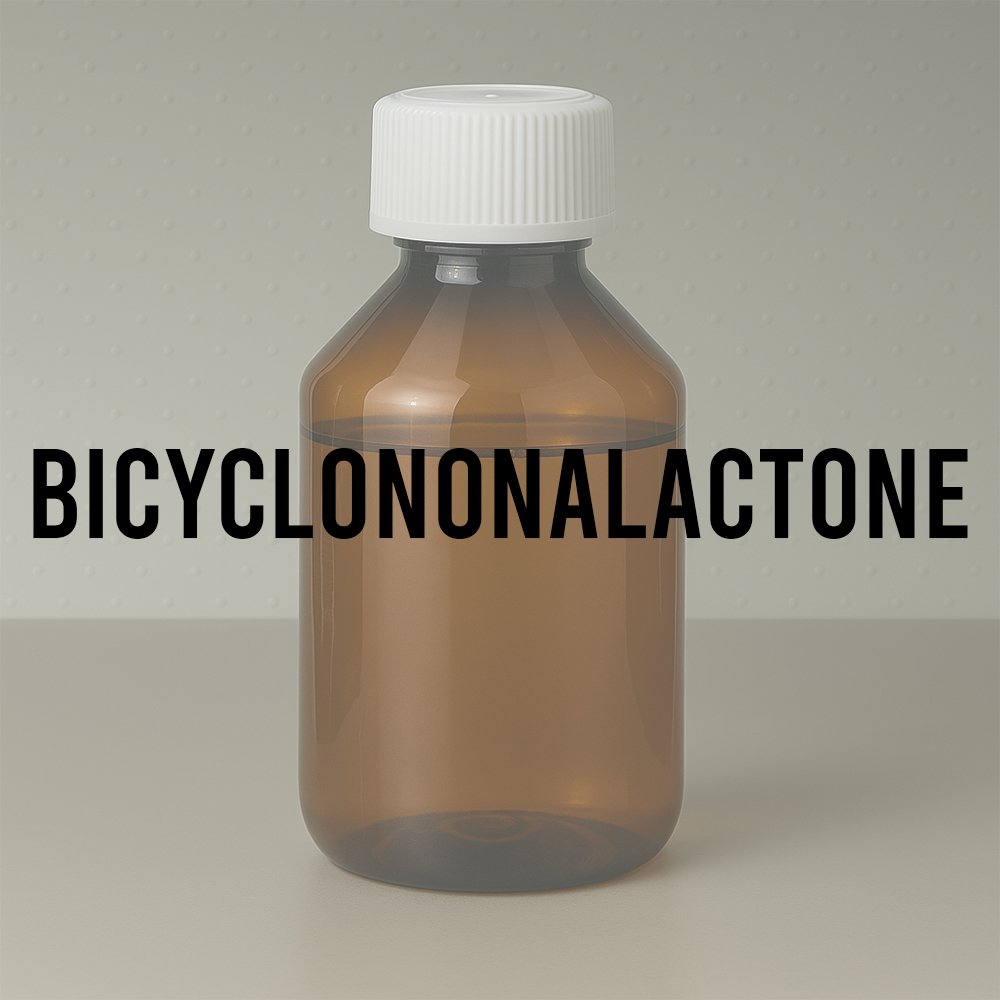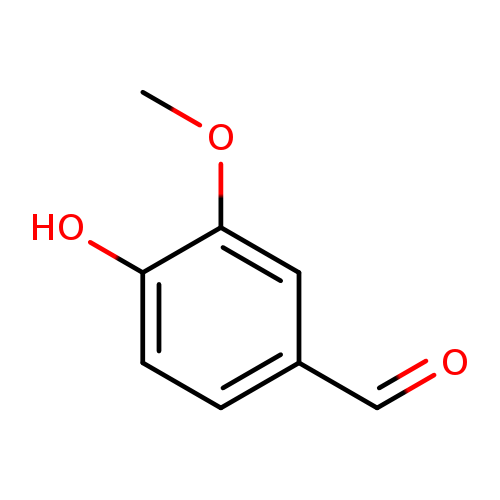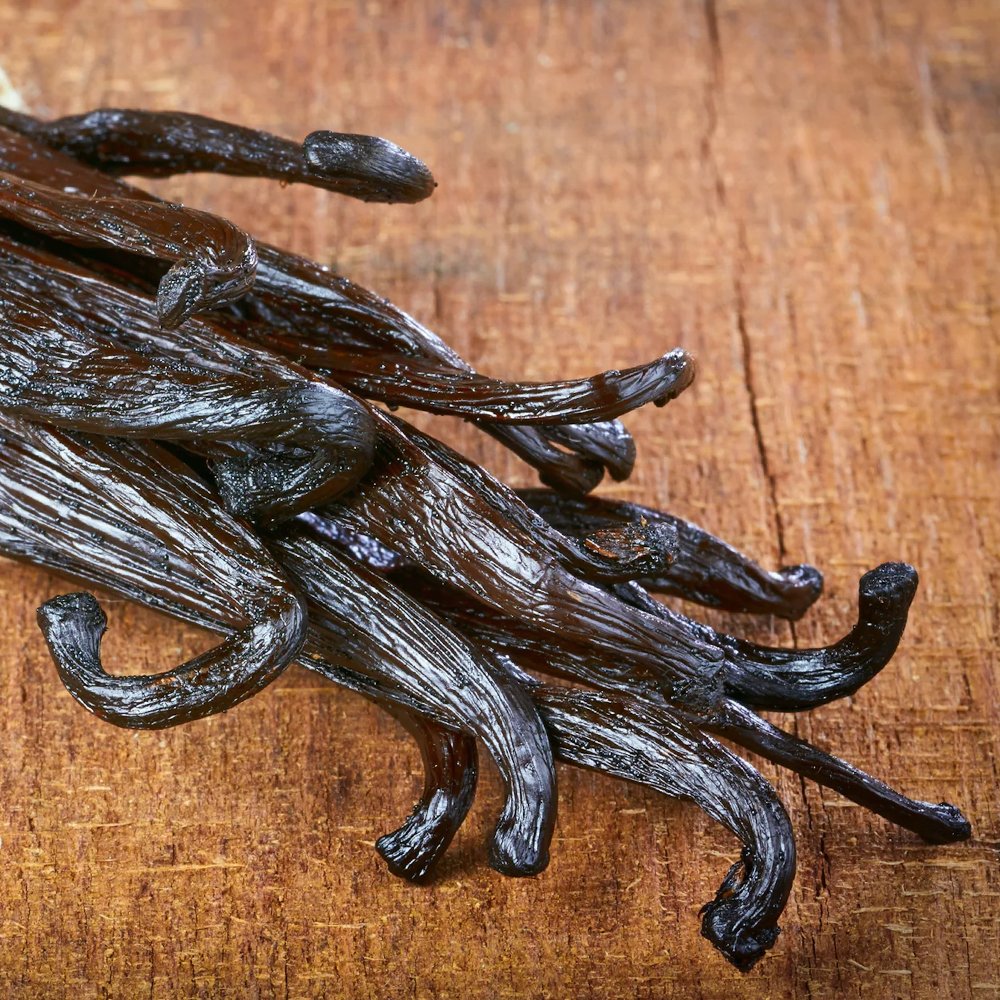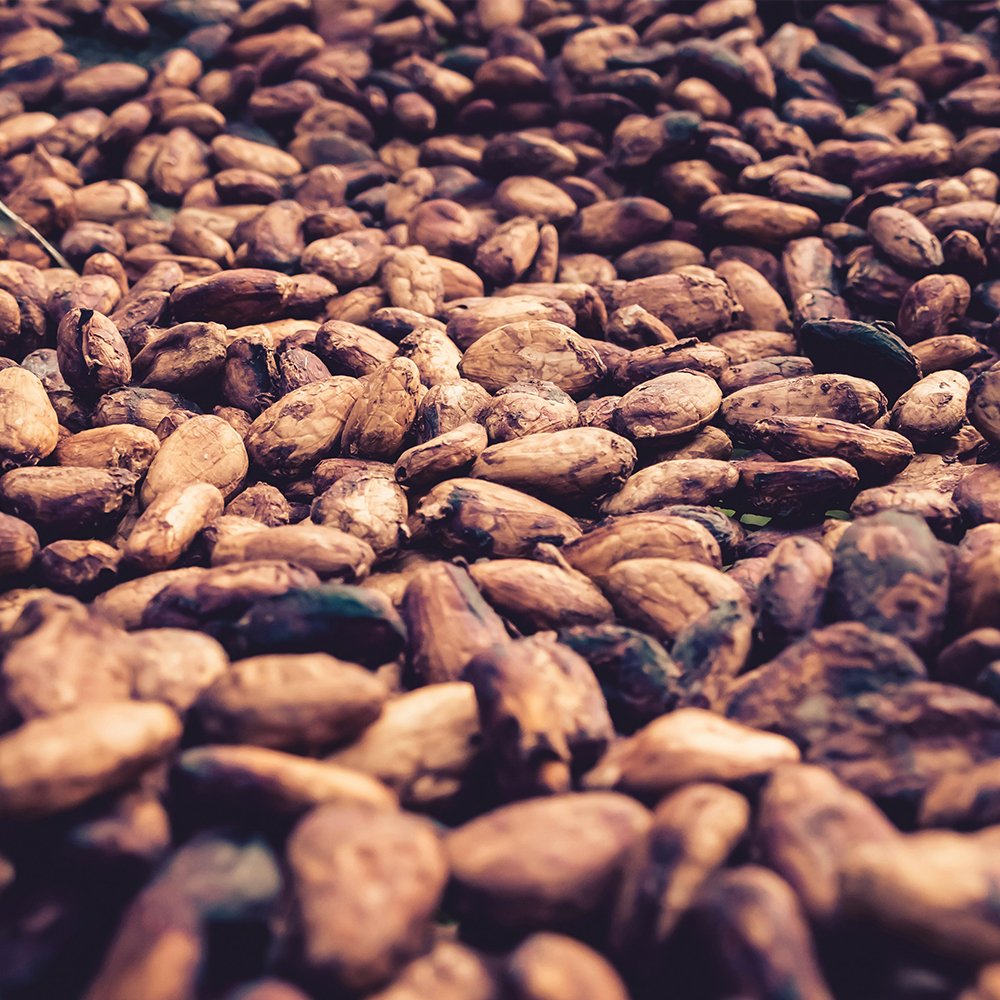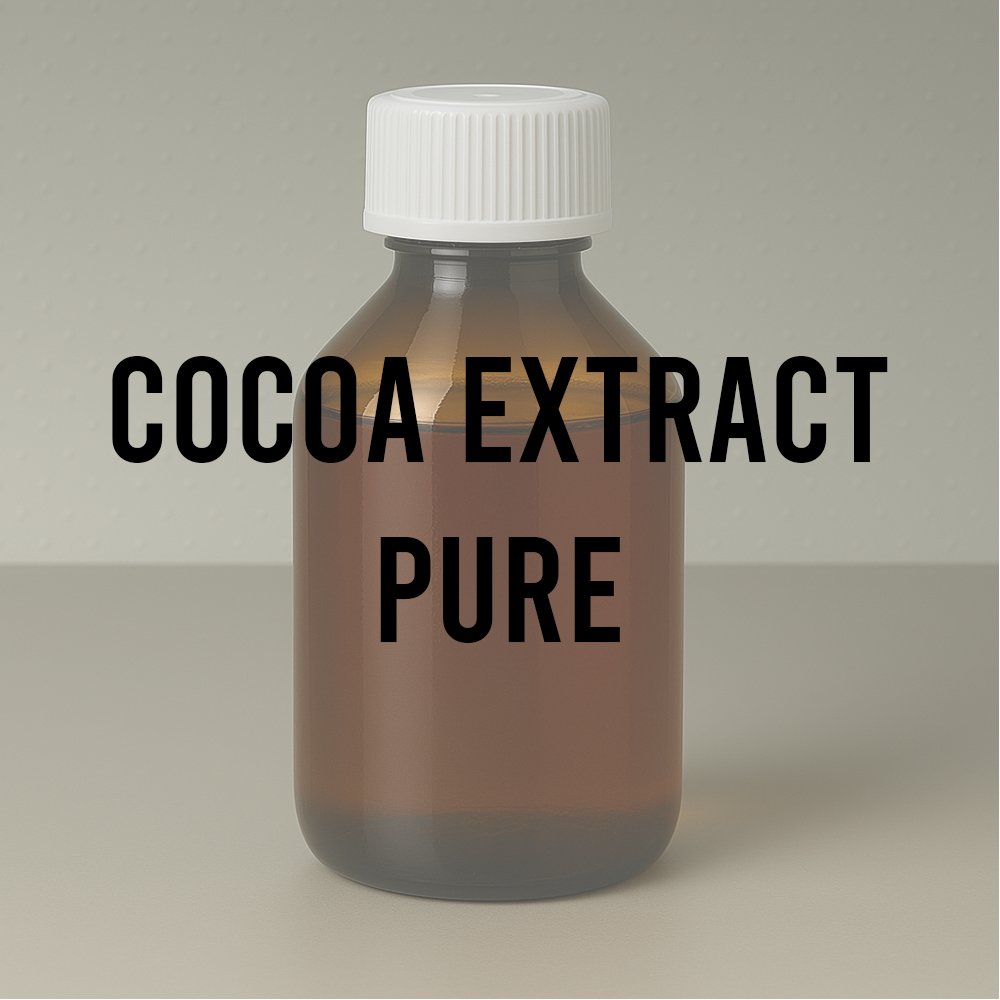Technical Ingredient Overview
🏭 Manufacturer — International Flavors & Fragrances (IFF)
🔎 Chemical Name — Ethyl 2-acetyloctanoate
🧪 Synonyms — Ethyl 2-hexylacetoacetate; Ethyl α-hexylacetoacetate; Ethyl 2-acetylcaprylate; Jasmin acetoacetate; Jaswamin; Jessate; Octanoic acid, 2-acetyl-, ethyl ester
📂 CAS Number — 29214-60-6
📘 FEMA Number — 4459
⚖️ Molecular Weight — 214.30 g/mol
📝 Odor Type — Floral-fruity, jasmine-pear character
📈 Odor Strength — Medium to strong
👃🏼 Odor Profile — Lasting, strong, refreshing and decidedly jasmine-like with an intriguing wine bouquet (IFF, 2025); combines jasmine-petal freshness with pear-nectar sweetness and a subtle white-wine nuance
⚗️ Uses — Fine fragrance compositions, functional perfumery applications (shampoos, conditioners, soaps), flavor formulations for beverages and food products (FEMA GRAS status)
🧴 Appearance — Colorless to very pale-yellow liquid (TCI Chemicals, 2025)
What is Gelsone™?
Gelsone™ is a synthetically produced acetoacetate ester developed and commercialized by International Flavors & Fragrances (IFF) as a high-performance fragrance ingredient. Chemically classified as ethyl 2-acetyloctanoate, this molecule belongs to the β-keto ester family, specifically the acetoacetate class of compounds. The material represents a successful example of rational molecular design in perfumery, where specific structural modifications to the acetoacetate backbone—in this case, the introduction of a hexyl (six-carbon) side chain—generate distinctive olfactory properties that combine floral jasmine character with fruity pear nuances.
The compound exists as a mixture of keto-enol tautomers, a characteristic feature of β-dicarbonyl compounds. This tautomeric equilibrium contributes to the molecule's chemical reactivity and stability profile (Wikipedia, 2025). The molecular structure consists of an ethyl ester group connected to an acetyl-substituted octanoic acid framework, with the acetyl group positioned at the alpha carbon relative to the ester functionality. This particular arrangement creates a balance between volatility and substantivity that makes Gelsone particularly valuable in modern perfumery, where both diffusive top-note brightness and lasting heart-note presence are desired.
As a member of the acetoacetate ester family, Gelsone shares structural similarities with other important fragrance materials but distinguishes itself through the specific length and positioning of its alkyl substituent. The hexyl chain provides optimal lipophilicity for skin substantivity while maintaining sufficient volatility for olfactory impact, creating what perfumers describe as a luminous, transparent floral-fruity character.
Historical Background
The development of Gelsone occurred during a particularly innovative period in fragrance chemistry, when researchers were systematically exploring acetoacetate esters and their olfactory properties. The fundamental chemistry underlying Gelsone's synthesis has roots in classical organic chemistry dating back to the mid-19th century. Ethyl acetoacetate itself—the parent compound from which Gelsone is derived—was first synthesized in the 1860s through the Claisen condensation of ethyl acetate (Wikipedia, 2025). This β-keto ester became a cornerstone of synthetic organic chemistry and found early applications in the production of dyes and pharmaceuticals before its utility in fragrance chemistry was fully appreciated.
The acetoacetic ester synthesis—the general method for alkylating ethyl acetoacetate at the alpha carbon position—was established as a fundamental transformation in organic chemistry by the early 20th century (Chemistry LibreTexts, 2023). This methodology involves treating ethyl acetoacetate with a strong base such as sodium ethoxide to generate the enolate anion, which then undergoes nucleophilic substitution with an alkyl halide. In the case of Gelsone, this alkylation introduces a hexyl (six-carbon) chain, yielding ethyl 2-hexylacetoacetate, the chemical identity of Gelsone (CAS Common Chemistry, n.d.).
The application of acetoacetic ester chemistry to perfumery ingredients emerged gradually throughout the 20th century. Early perfumery chemistry focused primarily on simple esters formed from natural alcohols and acids, with benzyl acetate—identified as a major component of jasmine absolute in the late 19th century—serving as a foundational jasmine material (Fragrantica, n.d.). However, as the fragrance industry matured, chemists recognized that systematic structural modifications to ester molecules could generate novel olfactory profiles with improved performance characteristics.
By the 1970s, major fragrance houses including IFF were investing heavily in research and development programs aimed at discovering new fragrance molecules with commercial potential (IFF, 2025). IFF's research during this period focused on understanding structure-odor relationships and identifying molecules that could provide desirable olfactory effects while meeting stringent performance requirements for stability, substantivity, and cost-effectiveness. The exploration of alkylated acetoacetates represented one avenue of this broader research effort, as chemists sought to create jasmine modifiers with enhanced tenacity compared to simpler fruity esters.
The specific discovery that ethyl 2-acetyloctanoate possessed exceptional jasmine-like character combined with fruity facets and wine-like nuances emerged from systematic screening of various alkyl chain lengths in acetoacetate structures. Researchers at IFF identified that the hexyl substituent produced an optimal balance of olfactory qualities and technical performance. The material's ability to provide clean, transparent jasmine character without heavy indolic aspects, combined with its excellent substantivity and stability in diverse formulation matrices, made it commercially attractive.
Following its identification as a promising fragrance ingredient, ethyl 2-acetyloctanoate was commercialized by IFF under the trade name Gelsone™ in the early 1980s. This timing coincided with evolving trends in perfumery toward lighter, more transparent floral compositions, as consumers increasingly favored fresh, modern interpretations of classic floral themes over heavier, more traditional formulations. Gelsone's luminous, airy quality made it particularly well-suited to these emerging aesthetic preferences.
The molecule also addressed practical formulation challenges faced by perfumers. Its thermal stability and compatibility with alkaline systems expanded its utility beyond fine fragrance into functional perfumery applications including shampoos, conditioners, and soaps—product categories experiencing rapid growth during the 1980s. Additionally, Gelsone's favorable toxicological profile and subsequent recognition by FEMA as a GRAS flavoring substance (FEMA 4459) further broadened its commercial applications (FEMA, 2024).
Since its introduction, Gelsone has established itself as what perfumers describe as a "quiet workhorse"—a reliable, versatile ingredient that may not attract headlines but provides consistent value across numerous fragrance applications. The material's combination of jasmine authenticity, fruity brightness, fixative properties, and technical robustness has secured its position in the perfumer's palette for over four decades.
Olfactory Profile
Scent Family: Gelsone belongs to the floral-fruity olfactory family, with specific classification as a jasmine modifier and pear accent material.
Main Descriptors: The primary olfactory impression combines several distinct facets. The dominant jasmine character presents as clean, luminous, and somewhat abstracted—evoking the fresh, green-floral aspects of jasmine petals rather than the heavier, indolic richness of jasmine absolute. This jasmine note interweaves with a pronounced pear-nectar sweetness that adds fruity juiciness and transparent freshness. An intriguing wine bouquet provides subtle fermented, slightly vinous undertones (IFF, 2025) that add complexity and sophistication to the overall profile. Secondary descriptors include waxy-green nuances and delicate white-flower tonalities that contribute to the material's versatility in floral compositions.
Intensity: Gelsone exhibits medium odor strength at full concentration (Creating Perfume, n.d.), providing substantial olfactory impact without overwhelming neighboring materials in a composition. The molecule demonstrates excellent diffusion characteristics, radiating effectively from the substrate while maintaining balanced projection. This moderate-to-strong intensity allows perfumers to use Gelsone at relatively low concentrations while achieving meaningful olfactory contribution to the overall fragrance structure.
Tenacity: The material displays exceptional persistence for an ester-type molecule. On a scent strip at full strength, Gelsone demonstrates longevity of up to 92 hours (Creating Perfume, n.d.), indicating remarkable substantivity. This extended tenacity results from the molecule's optimal molecular weight and lipophilicity, which promote adhesion to substrates and slower evaporation rates compared to simpler, lower-molecular-weight esters. In practical applications on skin or fabric, Gelsone maintains perceptible presence well into the heart and early base phases of fragrance development.
Volatility: Gelsone functions primarily as a middle note, positioning it in the heart of fragrance compositions. With a boiling point of 148-149°C at 25 Torr (CAS Common Chemistry, n.d.), the material exhibits moderate volatility—less volatile than typical top-note esters but more volatile than base-note materials. This intermediate evaporation rate allows Gelsone to bridge the gap between fleeting top notes and persistent base notes, providing continuity and coherence throughout the fragrance's evolution on skin. The material's diffusive quality means it makes an early appearance in the fragrance development, contributing brightness to opening accords, while its substantivity ensures continued presence as the composition transitions into its heart phase.
Fixative Role: While not a traditional fixative in the sense of materials like musks or resins, Gelsone demonstrates notable fixative properties for delicate fruity and floral notes. The molecule's structure allows it to form favorable intermolecular interactions with more volatile components, effectively slowing their evaporation and extending their perceptible life in a composition. This fixative function proves particularly valuable for maintaining the freshness and vibrancy of fruity top notes and delicate white-flower accords. Additionally, Gelsone can moderate and soften the sharp indolic edges sometimes present in natural jasmine absolute, creating a more balanced and wearable jasmine character in the final fragrance.
Applications in Fine Fragrance
In fine fragrance compositions, Gelsone serves multiple creative functions. Its primary role involves enhancing and modernizing jasmine accords, where it contributes clean, transparent jasmine character without the potentially challenging animalic or indolic aspects of jasmine absolute. This makes Gelsone particularly valuable in contemporary white-floral bouquets intended for broad consumer appeal.
The material excels in pairing with traditional jasmine materials such as benzyl acetate and methyl anthranilate, where it reinforces the floral character while adding distinctive pear-melon brightness. In such combinations, Gelsone softens the sometimes sharp or synthetic qualities of simple aromatic esters, creating more natural-sounding and sophisticated jasmine reconstructions. Fragrantica notes that modern jasmine accords benefit from materials that bridge the gap between classical heaviness and contemporary freshness, a role that Gelsone fulfills effectively (Fragrantica, n.d.).
Beyond jasmine applications, Gelsone finds use in aquatic and ozonic compositions, where its luminous, transparent quality and subtle fruity sweetness enhance fresh, clean accords without adding weight or obvious fruitiness. The material's wine-like nuances contribute sophistication to these modern fragrance structures.
In chypre-type fragrances, particularly modern interpretations, Gelsone can soften harsh aldehydic openings, providing a gentle fruity-floral bridge between bright citrus-aldehyde top notes and the mossy-woody heart. The material's ability to add sweetness without cloying heaviness makes it useful for balancing and smoothing complex compositions.
Typical usage levels in fine fragrance concentrates range from 0.05% to 2%, though higher concentrations may be employed in specific applications where enhanced fruity-floral impact is desired.
Performance in Formula
Gelsone demonstrates excellent technical performance across diverse formulation matrices. The material blends readily with a wide range of fragrance ingredients, showing particular compatibility with esters, ketones, ionones, and lactones. This broad compatibility facilitates its incorporation into various accord structures without formulation challenges.
In terms of stability, Gelsone maintains its olfactory character and chemical integrity under typical formulation conditions. The material shows thermal stability up to approximately 90°C, allowing its use in products requiring heat processing or elevated storage temperatures. Notably, Gelsone exhibits no discoloration in alkaline soap bases, a significant advantage for functional perfumery applications where pH extremes might challenge less stable materials.
The material's substantivity profile proves advantageous in leave-on applications, where it provides lasting fragrance presence on skin and hair. In rinse-off applications such as shampoos and body washes, Gelsone demonstrates sufficient deposition to contribute perceptible fragrance character even after rinsing, enhancing the user's sensory experience.
Gelsone maintains diffusive heart presence in compositions without adding the lactonic heaviness sometimes associated with other middle-note floral modifiers. This characteristic allows perfumers to build bright, transparent accords that remain airy and modern rather than dense or old-fashioned.
Industrial & Technical Uses
Beyond fine fragrance, Gelsone finds extensive application in functional perfumery for personal care and home care products. In hair-care formulations—shampoos, conditioners, and styling products—the material provides fresh fruity-floral bloom that enhances the sensory appeal of cleansing and conditioning experiences. Its stability in surfactant systems and substantivity on hair make it particularly suitable for these applications.
In liquid soaps and body washes, Gelsone contributes clean, fresh fragrance character that aligns with consumer expectations for personal cleansing products. The material's performance in alkaline systems extends its utility to bar soap formulations, where pH stability is essential.
Gelsone holds FEMA status (FEMA 4459) as a GRAS (Generally Recognized As Safe) flavoring substance (FEMA, 2024), authorizing its use in food and beverage applications. In flavor formulations, the material contributes pear, white-wine, and tropical fruit profiles to finished products. Typical usage levels in beverages reach up to 20 ppm, where Gelsone provides subtle fruity sweetness and complexity without dominating the flavor profile.
The material's dual functionality as both fragrance and flavor ingredient reflects its favorable safety profile and organoleptic properties, expanding its commercial utility across multiple product categories.
Regulatory & Safety Overview
IFRA Status: Gelsone is not restricted according to the Standards of the International Fragrance Association (IFRA) up to and including the 49th amendment (Creating Perfume, n.d.). This unrestricted status continues through the current 51st Amendment to the IFRA Standards (IFRA, 2023), indicating that the material has undergone safety assessment and does not require usage limitations based on current scientific understanding of potential sensitization, phototoxicity, or systemic toxicity concerns. However, responsible formulation practice suggests usage levels typically maintained at or below 2% in fine fragrance concentrates unless specific risk assessment warrants higher concentrations.
EU Cosmetics Regulation: Gelsone complies with EU cosmetic regulations and does not appear on lists of prohibited or restricted substances. The material does not fall under the 26 fragrance allergens requiring declaration on cosmetic product labels, simplifying regulatory compliance for finished products containing fragrances with Gelsone.
FEMA Status: The Flavor and Extract Manufacturers Association (FEMA) recognizes ethyl 2-acetyloctanoate under FEMA number 4459 (FEMA, 2024) with GRAS status for flavoring applications. This designation reflects independent expert panel review and determination that the material is safe for its intended use in food products at appropriate levels.
Toxicology: The safety profile of Gelsone benefits from the material's classification as a simple aliphatic ester, a chemical class generally associated with low toxicity. The material does not present sensitization concerns at typical usage levels in fragrance applications. No phototoxic effects have been identified, and systemic toxicity evaluations support safe use in consumer products. The material's ready biodegradability (IFF, 2025) contributes to favorable environmental health and safety characteristics. As with all fragrance materials, appropriate handling procedures should be followed during manufacture and compounding operations, but the material presents no unusual toxicological concerns for end-use applications.
References:
CAS Common Chemistry. (n.d.). Ethyl 2-acetyloctanoate (CAS RN: 29214-60-6). Retrieved from https://commonchemistry.cas.org/detail?cas_rn=29214-60-6
Chemistry LibreTexts. (2023). Acetoacetic ester synthesis. Retrieved from https://chem.libretexts.org/Bookshelves/Organic_Chemistry/Supplemental_Modules_(Organic_Chemistry)/Esters/Synthesis_of_Esters/Acetoacetic_Ester_Synthesis
Creating Perfume. (n.d.). Gelsone. Retrieved from https://creatingperfumes.com/products/gelsone
FEMA. (2024). Flavor Library record 4459: Ethyl 2-acetyloctanoate. Retrieved from https://www.femaflavor.org/flavor-library/ethyl-2-acetyloctanoate
Fragrantica. (n.d.). Jasmine: A gift of gods. Retrieved from https://www.fragrantica.com/news/Jasmine-A-Gift-of-Gods-3659.html
IFF. (2025). Gelsone™ ingredient compendium. Retrieved from https://www.iff.com/scent/ingredients-compendium/gelsone/
IFF. (2025). About us - Our history. Retrieved from https://www.iff.com/about/history/
IFRA. (2023). The complete IFRA Standards: Up to and including the 51st Amendment. Retrieved from https://ifrafragrance.org/docs/default-source/51st-amendment/ifra-standards---51st-amendment.pdf
TCI Chemicals. (2025). Ethyl 2-hexyl acetoacetate – product data sheet. Retrieved from https://www.tcichemicals.com/US/en/p/H0129
Wikipedia. (2025). Ethyl acetoacetate. Retrieved from https://en.wikipedia.org/wiki/Ethyl_acetoacetate
Note: This overview represents current knowledge and regulatory status as of October 2025. Regulatory requirements and safety assessments evolve over time. Users should verify current compliance requirements for their specific applications and jurisdictions.




